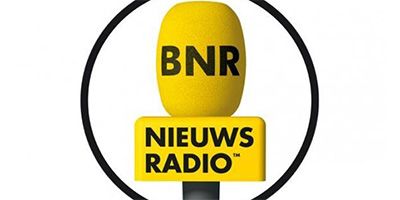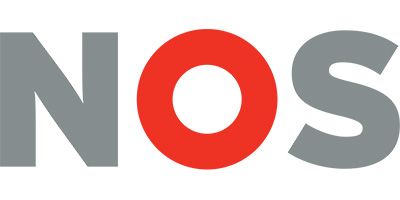
There's nothing wrong with the NPS, but with how people use it.
Net Promoter Score, or NPS, is one of the most popular ways to measure customer satisfaction. The idea is simple: you ask customers how likely they are to recommend your product or service to others, on a scale from 0 to 10. The answers are then used to calculate your score and classify into three groups: Promoters, Passives, and Detractors. Sounds easy, right?
It almost sounds too good to be true: one number that tells you everything about how customers experience your company. Yet, the NPS also raises many questions. What does such a number really say? How much insight does it truly provide into your customers' experience? And how do you find out what can be improved? In this blog, we delve into the much-discussed NPS and list the main points of criticism.
What is the Net Promoter Score?
In 2003, Fred Reichheld introduced the NPS as the metric to measure customer loyalty and growth potential. He argued that many companies invest too much time and money in complex customer satisfaction surveys, often with unclear results that have little connection to growth or profit. The solution? One simple question:
“How likely is it that you would recommend our company to a friend or colleague?”
Customers answer this question on a scale from 0 to 10, where 0 means "not at all likely" and 10 "extremely likely". Based on their score, they are classified into three groups: Detractors (0-6), Passives (7-8), and Promoters (9-10). The idea behind this question is that customers only make recommendations if they are loyal. According to Reichheld, this simple approach provides companies with concrete and practical insights, allowing them to better respond to customer needs and growth opportunities.
Originally, NPS was mainly intended as a tool for measuring customer loyalty. It provided insight into how loyal customers were to a brand or organisation. Nowadays, however, the NPS is increasingly seen as a broader brand health metric. It has become an indicator of (brand) growth and success: how strong is your brand in the market and how well are you positioned to grow? This shift in focus highlights the limitations of the NPS and raises new questions about its interpretation.
The 3 Most Common Mistakes
While the NPS is embraced worldwide as the standard for customer loyalty and growth potential, there is also a growing number of critics questioning the effectiveness and reliability of this metric. Below, we discuss the main points of criticism.
1. We Measure NPS Incorrectly
People are generally poor at predicting their own behaviour: they don't do what they say, and they don't say what they do. In reality, behaviour is very changeable: someone who is a Promoter now, with a score of 9 or 10, may give a much lower score, like a 6, in a few months. This raises questions about the extent to which the NPS provides a consistent picture of loyalty.
Moreover, the categorisation of customers into the groups Promoters, Passives, and Detractors raises doubts about its accuracy and relevance. For instance, Promoters (with a score of 9 or 10) do not always actively promote the brand, while Detractors (with a score of 0 to 6) are not necessarily negative (Zaki et al., 2016). This weakens the relationship between the NPS and customer loyalty.
Furthermore, the 'Passive' customers with a score of 7 or 8 – together accounting for 18% of the scale but often a multiple of customers – are completely ignored in the calculation of the NPS. This method of calculation makes the NPS more susceptible to random noise, as valuable information from the results is omitted.
2. We Interpret the NPS Incorrectly
In many companies, the NPS is used as a predictor of (brand) growth. However, further research shows that this relationship is less strong than originally suggested (Baehre et al., 2022). The correlation between NPS and growth is only convincing in the original studies over a very short term, for example, within one quarter. This illustrates how we adjust our opinion to our behaviour, an example of cognitive dissonance: we do not necessarily buy the brands we recommend, but we recommend the brands we already buy.
Moreover, the NPS does not accurately predict loyalty, as there is only a moderate correlation between the NPS and both loyalty and customer satisfaction. For example, it is seen that Promoters do not always actively promote the brand and Detractors do not necessarily exhibit harmful behaviour towards the brand.
Larger dynamics, such as the Double Jeopardy Law, also play an important role in this (Sharp, 2010). This law states that brands with a lower market share not only have fewer customers but also attract less loyal customers. This brand loyalty is relative and subjective: consumers are often brand-polygamous and buy multiple brands, but as a brand grows, the degree of "monogamy" increases. For example, 41% of Coca-Cola buyers also buy Pepsi, while as many as 72% of Pepsi buyers also buy Coca-Cola (Sharp, 2012). This underscores that brand loyalty is more a consequence of market share than a predictor of growth through the NPS.
3. We Use the NPS Incorrectly
Is the NPS really a practical tool? Although the NPS is often praised for its speed and simplicity, in practice it raises questions about its usability. The method seems quick and straightforward: one question to customers, a simple score, and you have an indication of customer satisfaction and/or (brand) growth. But the NPS offers little concrete insights to actually improve anything. It predicts a bit of everything, but for each specific aspect, there are often better and more accurate alternatives.
Moreover, the predictive value of the NPS is highly dependent on the type of purchase. For low-involvement products, such as groceries, the value of the NPS decreases significantly, as emotional involvement and brand loyalty are often lower here. But for high-involvement purchases, such as cars, the predictive value of the NPS is somewhat greater, as such purchases are often accompanied by more conscious considerations. Still, the question remains whether a generic metric like the NPS can provide sufficiently in-depth and useful insights in a complex market.
What Is the Right Way?
NPS predicts a bit of everything, but only a little, and for everything, there is a better alternative. These alternatives are somewhat more complex to measure, but they also provide much better answers.
For example, you can better measure mental market share (Category Entry Points) in a brand health tracker to predict brand growth (watch the webinar about CEPs here). The NPS offers value in the short term or as a post-measurement, but loses its predictive power in the long term and does not reveal growth opportunities. CEPs, on the other hand, are much more effective and reliable in the long term.
For customer loyalty and satisfaction, the Customer Satisfaction Score (CSAT) offers a more comprehensive perspective. Still, the NPS can be a starting point to gain qualitative insights into what truly drives customer satisfaction. The strength of the NPS lies in the short term, for example, after measuring specific touchpoints in the customer journey. Combine the question with a "why" question, and ask it after interactions, such as a conversation with customer service, and use the feedback to make immediate improvements. This makes it a useful tool to quickly identify pain points, but the metric loses some of its original advantages, such as simplicity and speed.
References
Reichheld, F. F. (2003). The one number you need to grow. Harvard business review, 81(12), 46-55.
Baehre, S., O’Dwyer, M., O’Malley, L., & Lee, N. (2022). The use of Net Promoter Score (NPS) to predict sales growth: insights from an empirical investigation. Journal of the Academy of Marketing Science, 50(1), 67-84.
Zaki, M., Kandeil, D., Neely, A., & McColl-Kennedy, J. R. (2016). The fallacy of the net promoter score: Customer loyalty predictive model. Cambridge Service Alliance, 10, 1-25.






